Choosing the right cooktop for your kitchen can be overwhelming, especially with the various options available in the market. Gas, electric, and induction cooktops are the most common types, each with its advantages and considerations. Understanding the differences between them can help you make an informed decision when upgrading your kitchen.
In this article, we will explore the features, benefits, and considerations of gas, electric, and induction cooktops. We will delve into their performance, safety features, energy efficiency, installation, maintenance, and design options. By the end, you’ll have enough knowledge to decide which cooktop suits your requirements and style.
Gas cooktops have been a staple in kitchens for decades, known for their high-performance capabilities and aesthetic appeal. These cooktops use natural gas or propane as their fuel source, providing an open flame that allows for precise temperature control and quick heating.
One significant advantage of gas cooktops is their responsiveness to temperature adjustments. With open flames, you can quickly increase or decrease the heat, making it easier to achieve the ideal cooking temperature. This level of control is particularly useful when preparing delicate dishes that require careful monitoring.
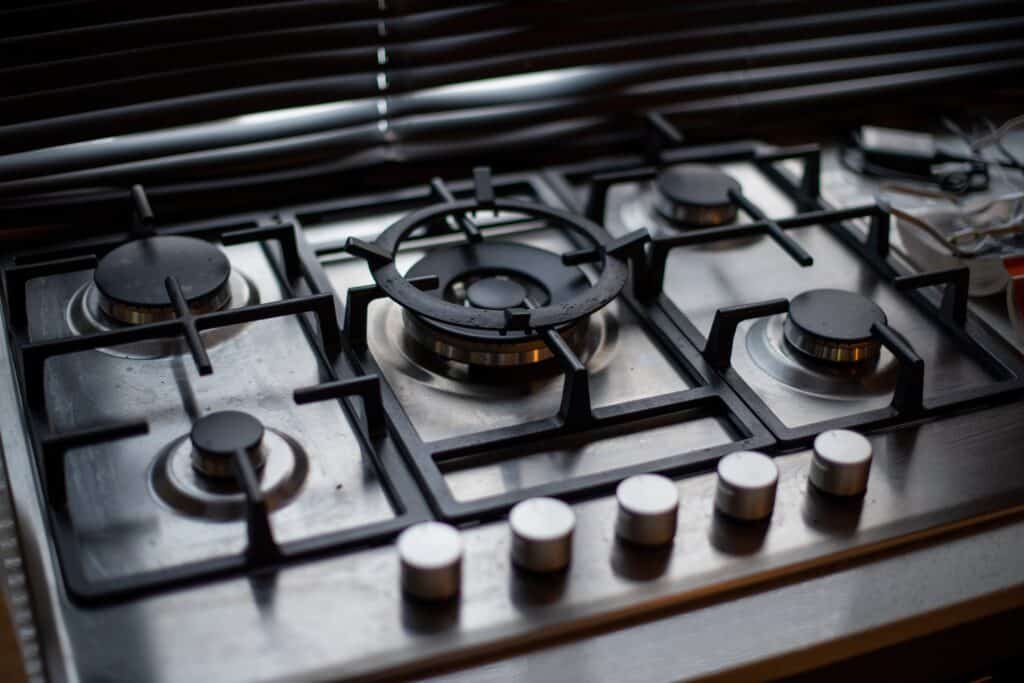
In addition to their performance, gas cooktops offer a classic and timeless look that blends well with traditional kitchen decor. They are available in various sizes and styles, from four to six burners and with or without built-in griddles or grills. Moreover, gas cooktops are relatively easy to install and maintain, making them a popular choice among homeowners and chefs alike.
| Advantages | Considerations |
|---|---|
| Open flame for precise temperature control | May not be suitable for all kitchens due to the need for natural gas or propane connections |
| Quick and responsive heating capability | Requires a gas line installation, which can be costly |
| A classic and timeless look that blends well with traditional kitchens | Can pose a safety hazard due to the open flames |
| Available in various sizes and styles with different burner configurations | May be more challenging to clean due to removable grates and burners |
Overall, gas cooktops are an excellent choice for those who value performance, responsiveness, and classic design. While they may not be suitable for all kitchens due to the need for natural gas or propane connections, they offer a level of control and precision that is unmatched by other cooktop types.
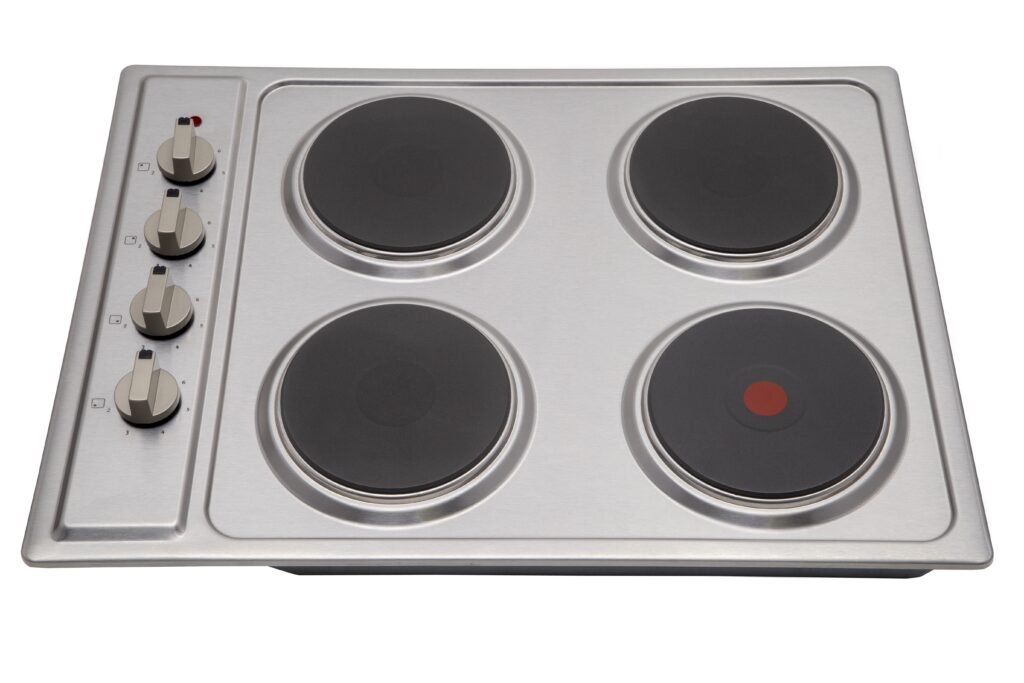
Electric cooktops are a popular choice for homeowners who prefer a different cooking experience than gas cooktops. These models use electric coils or radiant heat to cook food and come in two different styles: smoothtops and coiled burners.
Electric cooktops with coiled burners are less expensive than those that use radiant heat technology. However, radiant heat cooktops distribute heat more evenly on the surface, making cooking much more precise and consistent.
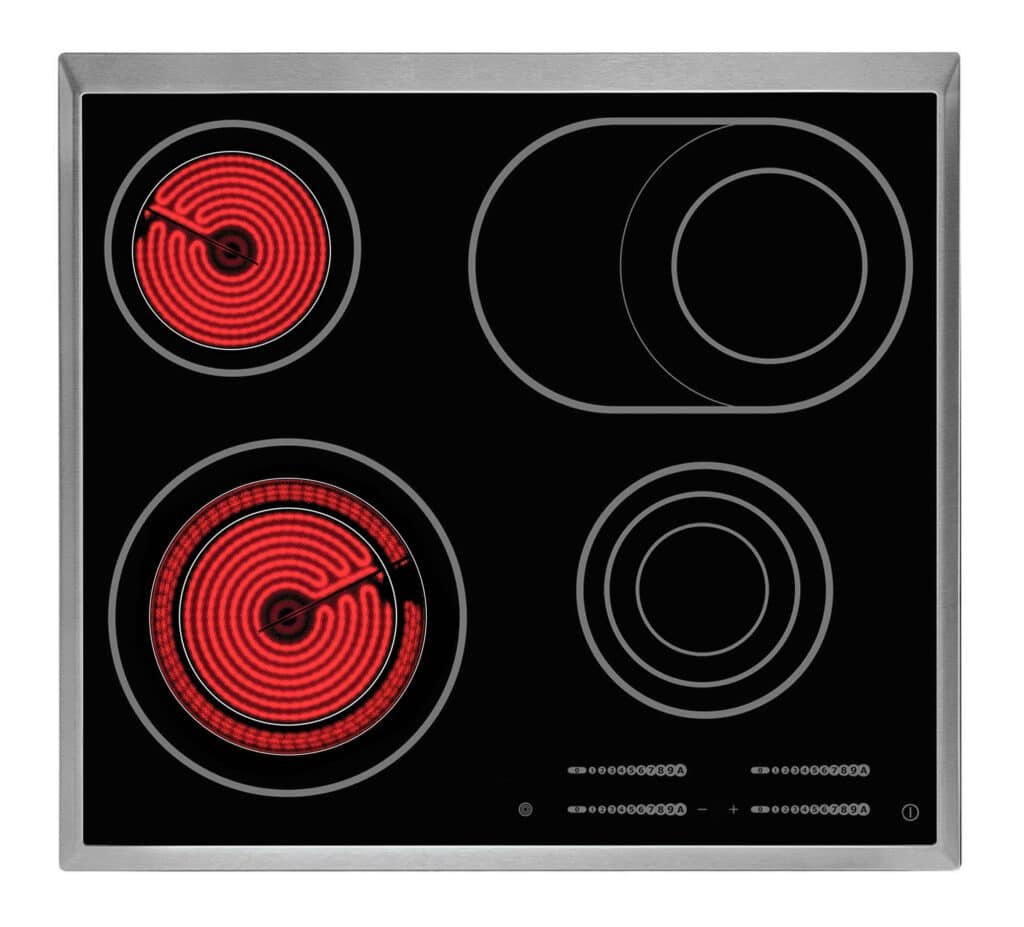
Smoothtop cooktops are a sleek upgrade from coiled burners. They have a glass ceramic surface that provides an even heating experience. However, they require special cleaning products and cannot be used with certain types of cookware.
Electric cooktops have a range of benefits that make them an attractive choice for many homeowners. These include:
While electric cooktops are a popular choice, there are some considerations to keep in mind before making a purchase:
Smoothtops and coiled burners require different cleaning and maintenance routines. Coiled burners can be easily wiped clean, while smoothtops require special cleaning products to prevent scratches and stains. Regular maintenance includes checking for loose connections and handling electric coils with care, as they can become brittle over time.
Induction cooktops are a modern and innovative cooking technology that utilizes electromagnetic fields to heat cookware directly. Unlike gas or electric cooktops, which heat the air around the pot or pan, induction cooktops transfer heat directly to the cookware, making them incredibly fast and energy-efficient.
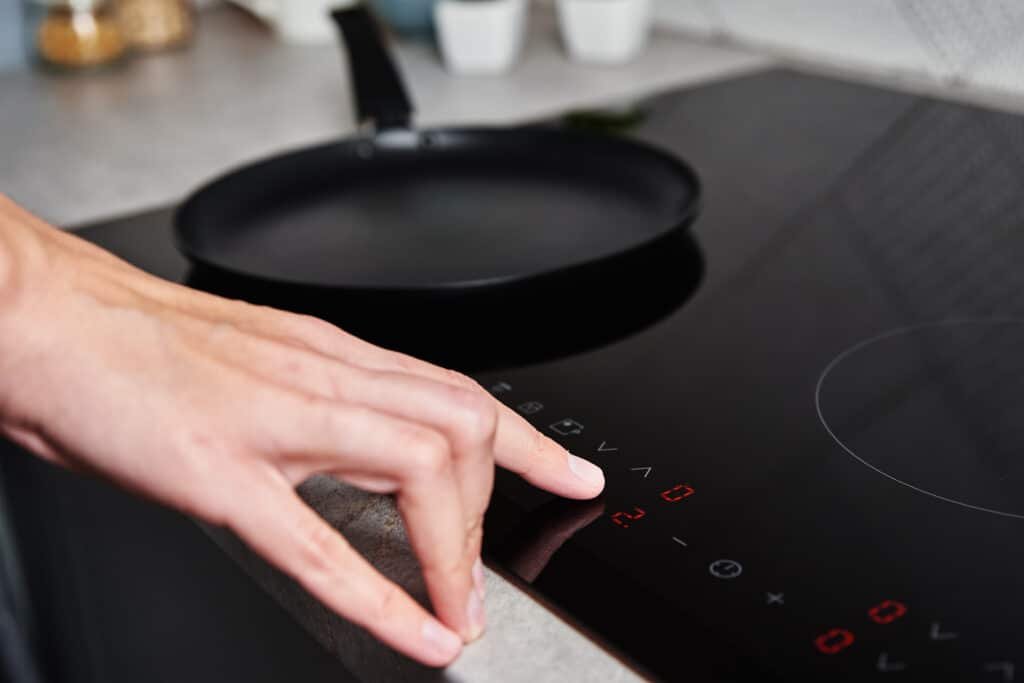
The electromagnetic field creates instant heat, so the cookware heats up much faster than with other types of cooktops. This type of cooktop requires special magnetic cookware to work, but it also means that the cookware stays cool to the touch, making it safer to use.
| Advantages | Considerations |
|---|---|
|
|
Overall, induction cooktops provide a unique and efficient cooking experience that is worth considering for your kitchen upgrade. The energy efficiency and instant heat make this type of cooktop an excellent choice for home chefs who want to cook quickly and save on energy bills.
When it comes to cooking performance and control, gas, electric, and induction cooktops each have unique strengths.
Gas cooktops are known for their precise temperature control and instant responsiveness to heat adjustments. With open flames, you can observe and adjust the heat output quickly to achieve the perfect temperature for your dish. Gas cooktops also provide excellent cooking performance for tasks such as searing, simmering, and stir-frying.
Electric cooktops offer consistent heat distribution and are better suited for tasks that require uniform heating, such as cooking sauces or melting chocolate. Smoothtop electric cooktops provide a sleek and easy-to-clean surface. However, electric cooktops are relatively slower to heat up and cool down, making it a challenge when a quick temperature adjustment is needed.
Induction cooktops use electromagnetic fields to heat up the cookware directly, providing instant heat and precise temperature control. This results in faster cooking times and energy efficiency, as there is no wasted heat. Induction cooktops also allow for greater control over the cooking temperature, making them an ideal choice for tasks that require low heat, such as simmering and melting.
Overall, the choice of cooktop for cooking performance and control depends on your cooking habits and preferences. If precise control and instant responsiveness are essential, gas cooktops may be the best choice. If uniform heating is required, electric cooktops are the way to go. Alternatively, if speed and energy efficiency are top priorities, induction cooktops are the ideal option.
Safety should always be a top priority when it comes to your kitchen appliances. Let’s take a closer look at the safety considerations associated with gas, electric, and induction cooktops.
Gas cooktops use open flames to heat up your cookware, which can pose a risk if you are not careful. Always make sure to keep flammable items at a safe distance from the cooktop, and never leave the flames unattended. Additionally, make sure to turn off the gas supply when you are not using the cooktop.
Electric and induction cooktops heat up your cookware through direct heat transfer. While this method eliminates the risk of open flames, the cookware can become extremely hot and pose a burn hazard. Always use oven mitts or pot holders when handling hot cookware, and be careful not to touch the cooktop surface while it is still hot.
If you have children at home, it is essential to consider the safety features of your cooktop. Gas cooktops usually have knobs that can be easily turned, which can be dangerous for curious little hands. Consider purchasing a model with child lock features or installing knob covers to prevent accidental ignition. For electric and induction cooktops, make sure to choose a model with cool-to-touch surfaces that will not burn children if they accidentally touch it.
Always remember to follow the manufacturer’s instructions for proper use and maintenance of your cooktop, and never hesitate to contact a qualified technician if you suspect any issues or malfunctions.
When considering a cooktop, energy efficiency is a crucial factor to take into account. Not only does it impact your utility bills, but it also affects the environment. Let’s compare the energy efficiency of gas, electric, and induction cooktops.
| Cooktop Type | Energy Source | Efficiency Rating |
|---|---|---|
| Gas Cooktops | Natural Gas or Propane | 3-5% of energy used for cooking |
| Electric Cooktops | Electricity | 65-70% of energy used for cooking |
| Induction Cooktops | Electricity and Electromagnetic fields | 90% of energy used for cooking |
As shown in the table above, induction cooktops have the highest energy efficiency rating, using 90% of the energy for cooking. This is due to the use of electromagnetic fields that directly heat the cookware, resulting in less energy waste. Electric cooktops follow, with an efficiency rating of 65-70%, while gas cooktops have the lowest efficiency rating, using only 3-5% of energy for cooking.
Although gas cooktops have a lower efficiency rating, they provide instant heat and precise temperature control, making it easier to cook delicate dishes. On the other hand, electric and induction cooktops take longer to heat up and cool down, but they offer a more consistent and even heat distribution.
Ultimately, the energy efficiency of your cooktop will depend on your personal cooking habits and preferences. If you prioritize energy efficiency, consider investing in an induction cooktop, but be prepared for a potentially higher upfront cost.
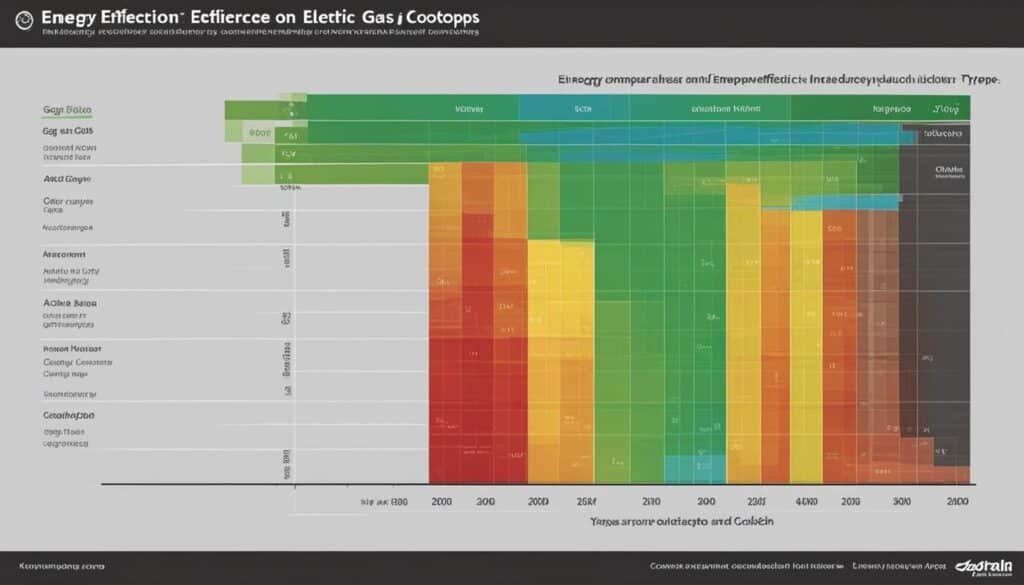
Proper installation and maintenance are crucial in ensuring optimal performance and longevity of your cooktop. Depending on the type of cooktop you choose, installation requirements may vary. Here are some considerations to keep in mind:
Gas cooktops require a gas line connection, which must be installed by a professional plumber or gas fitter. Proper ventilation is also necessary to remove harmful gases, such as carbon monoxide, from the cooking area. It’s essential to have a vent hood that meets the cooktop’s requirements and venting capacity. Regular cleaning of the cooktop and the gas burners is vital to prevent blockages and ensure efficient gas flow.
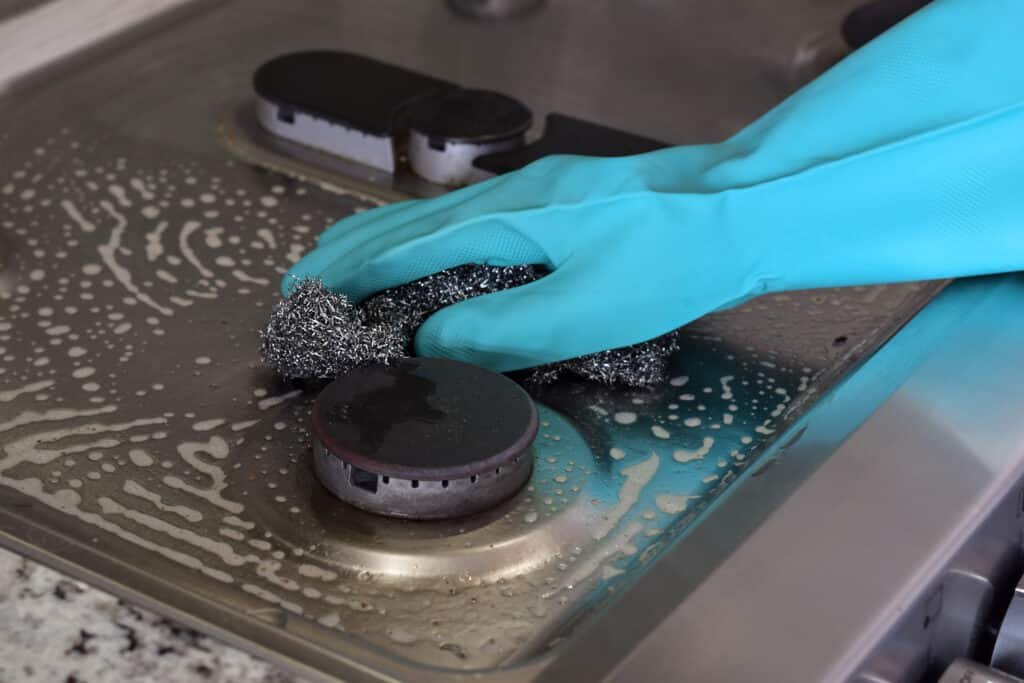
Electric cooktops require a dedicated 240-volt electric circuit that must be installed by a licensed electrician. The cooktop must be leveled correctly to ensure even heating and prevent damage to the cookware. Electric coils or smoothtops should be cleaned regularly to prevent food buildup that can affect the heating elements’ performance.

Induction cooktops require a dedicated 240-volt electric circuit, similar to electric cooktops. However, the installation must also include an induction-compatible cookware set. The induction technology generates heat through an electromagnetic field that responds only to iron and steel cookware. Proper maintenance includes regular cleaning of the cooktop and the cookware to prevent scratches and ensure optimal performance.

Proper ventilation is crucial in all types of cooktop installations. Ensure proper hood ventilation, whether it’s a hood that draws air outside or a filter that recirculates it within the kitchen. Lastly, always follow the manufacturer’s cleaning and maintenance instructions to avoid voiding the warranty or causing damage to your cooktop.
When it comes to cooktops, design and aesthetics are essential considerations to elevate the overall look of your kitchen. A well-designed cooktop can serve as a focal point and enhance the ambiance of your culinary space.
Gas cooktops offer a classic look with their open flames and sturdy grates, making them a popular choice among traditional or rustic kitchen styles. For a more modern and sleek option, electric cooktops with smooth, glass surfaces and touch controls can blend seamlessly with contemporary decor.
Induction cooktops offer a futuristic and minimalist look, with their seamless glass surfaces and no visible heating elements. They can fit well in futuristic and minimalist kitchen designs.
Ultimately, the design and aesthetic of your cooktop depend on your personal preference and your kitchen decor style. Consider the materials, colors, and finishes that match your existing design elements to create a cohesive look.
“Choosing a cooktop that complements your kitchen decor can enhance the aesthetics and elevate the ambiance of your culinary space.”
Investing in a cooktop is a decision that requires careful consideration of upfront and operating costs. Understanding the cost differences between gas, electric, and induction cooktops can help you make an informed decision that fits your budget and cooking needs.
| Cooktop Type | Upfront Costs | Operating Costs |
|---|---|---|
| Gas Cooktop | $$ | $$ |
| Electric Cooktop | $ | $$ |
| Induction Cooktop | $$$ | $ |
Gas cooktops come with a higher upfront cost compared to electric or induction models. This is due to the need for a gas line installation and potentially higher-priced appliances. However, gas cooktops tend to be more durable and have lower operating costs, as natural gas is generally less expensive than electricity.
Electric cooktops have a lower upfront cost but tend to have higher operating costs compared to gas or induction models. This is because electricity rates are generally higher than natural gas rates. However, electric cooktops are easy to install and offer a sleek and modern look with options like smoothtops.
Induction cooktops have the highest upfront cost due to their innovative technology. However, they offer the lowest operating costs as they use electromagnetic fields to heat up only the cookware, resulting in less wasted energy. Induction cooktops are also fast and precise, making them an excellent choice for serious home cooks.
When considering the cost of a cooktop, it’s important to factor in the long-term savings from energy-efficient models and the potential need for additional installation costs, such as ventilation requirements.
Cost comparison, upfront costs, and operating costs are important factors to consider when choosing a cooktop that fits your budget and cooking needs. By understanding the differences between gas, electric, and induction cooktops, you can make an informed decision that brings both financial and culinary benefits to your kitchen.
Choosing the perfect cooktop for your kitchen can be a daunting task. However, by considering your personal preferences and cooking habits, you can make an informed decision that will elevate your culinary experience.
When choosing a cooktop, it’s essential to take into account your personal preferences. Are you drawn to the traditional cooking experience of open flames, or do you prefer the modern technology of induction cooktops? Do you prioritize energy efficiency or ease of cleaning? By understanding your preferences, you can narrow down your options and select a cooktop that aligns with your style and needs.
Your cooking habits can also play a significant role in selecting a cooktop. Do you enjoy cooking with high heat or low simmering? Do you frequently cook using large pots and pans, or smaller ones? By understanding your cooking habits, you can determine the level of control and responsiveness you require from your cooktop and choose the one that best suits your needs.
Finally, it’s important to take into account your kitchen’s specific requirements. Does your kitchen have access to natural gas or require an electric connection? How much ventilation is needed for safe operation? By understanding your kitchen’s requirements, you can select a cooktop that is compatible with your existing setup and meets all necessary safety regulations.
Ultimately, by considering your personal preferences, cooking habits, and kitchen requirements, you can choose the perfect gas, electric, or induction cooktop for your culinary needs. Happy cooking!